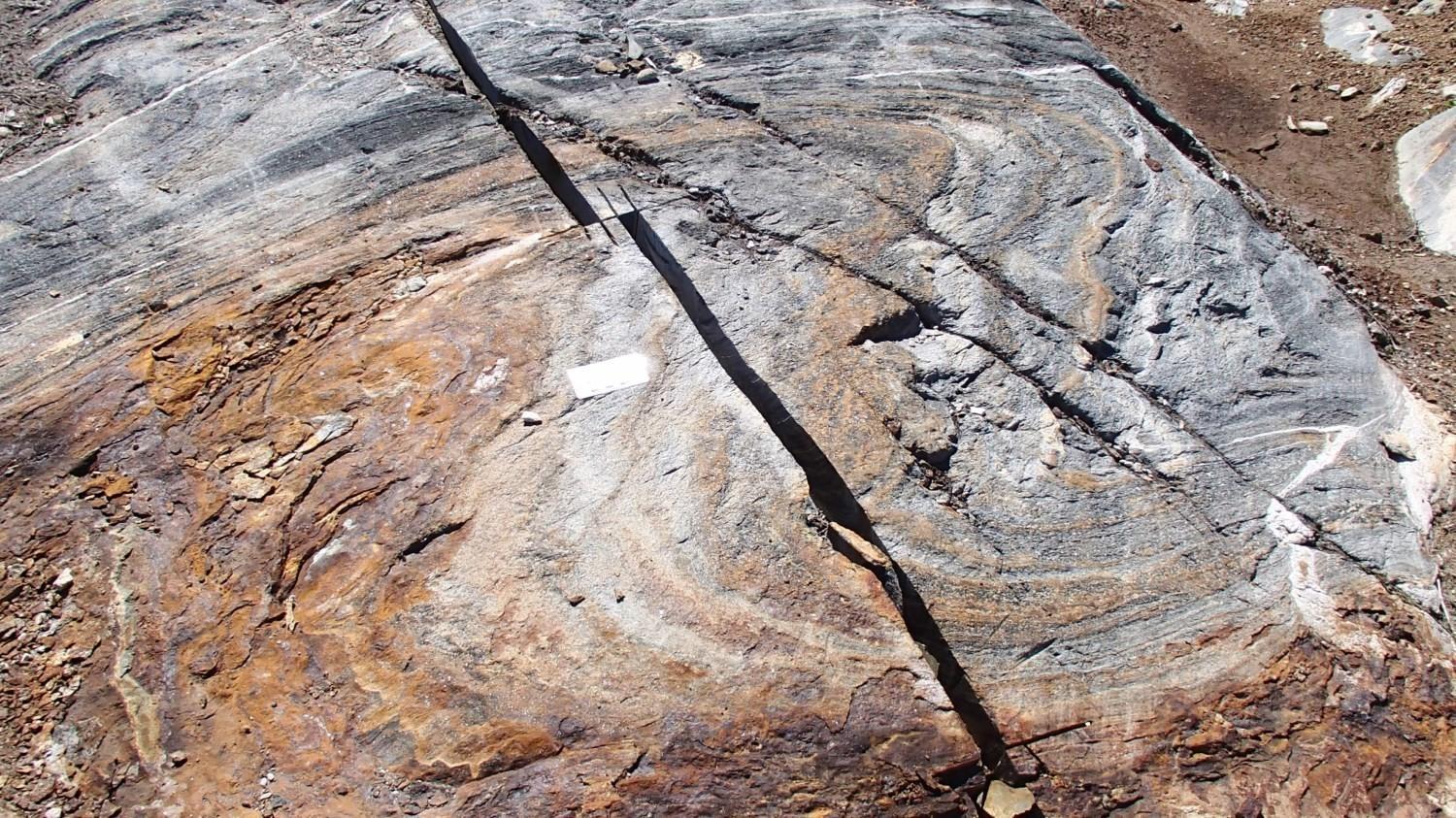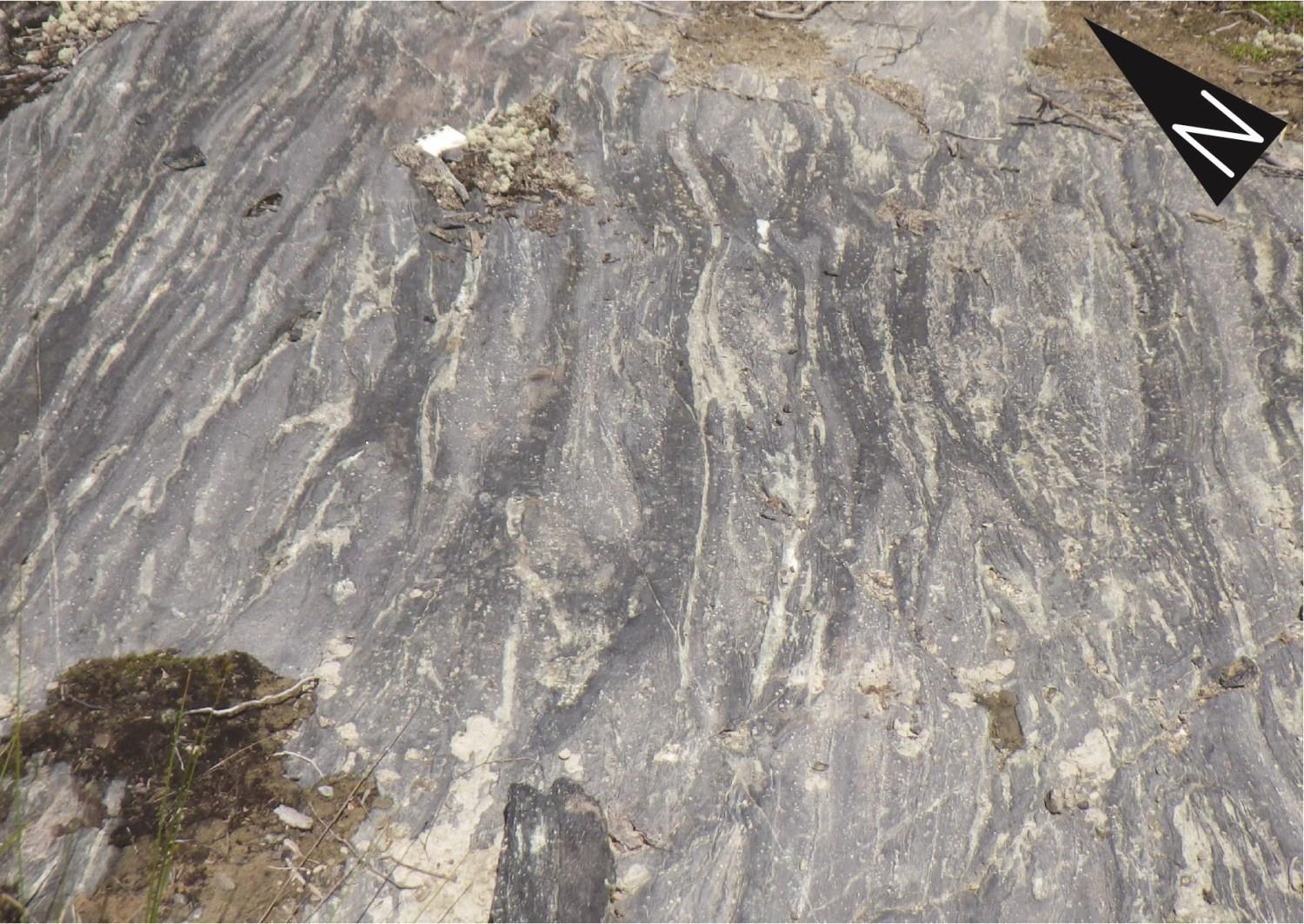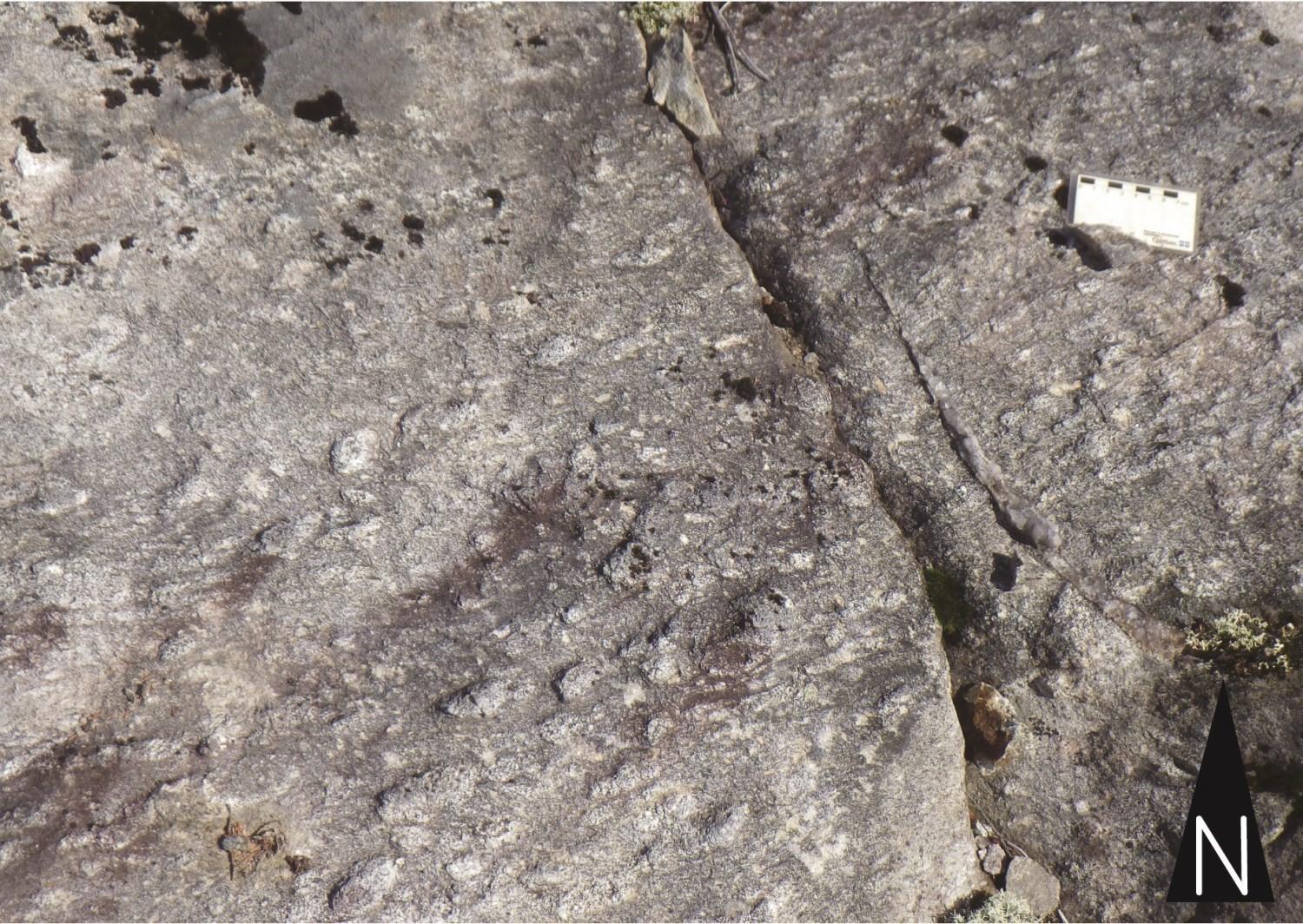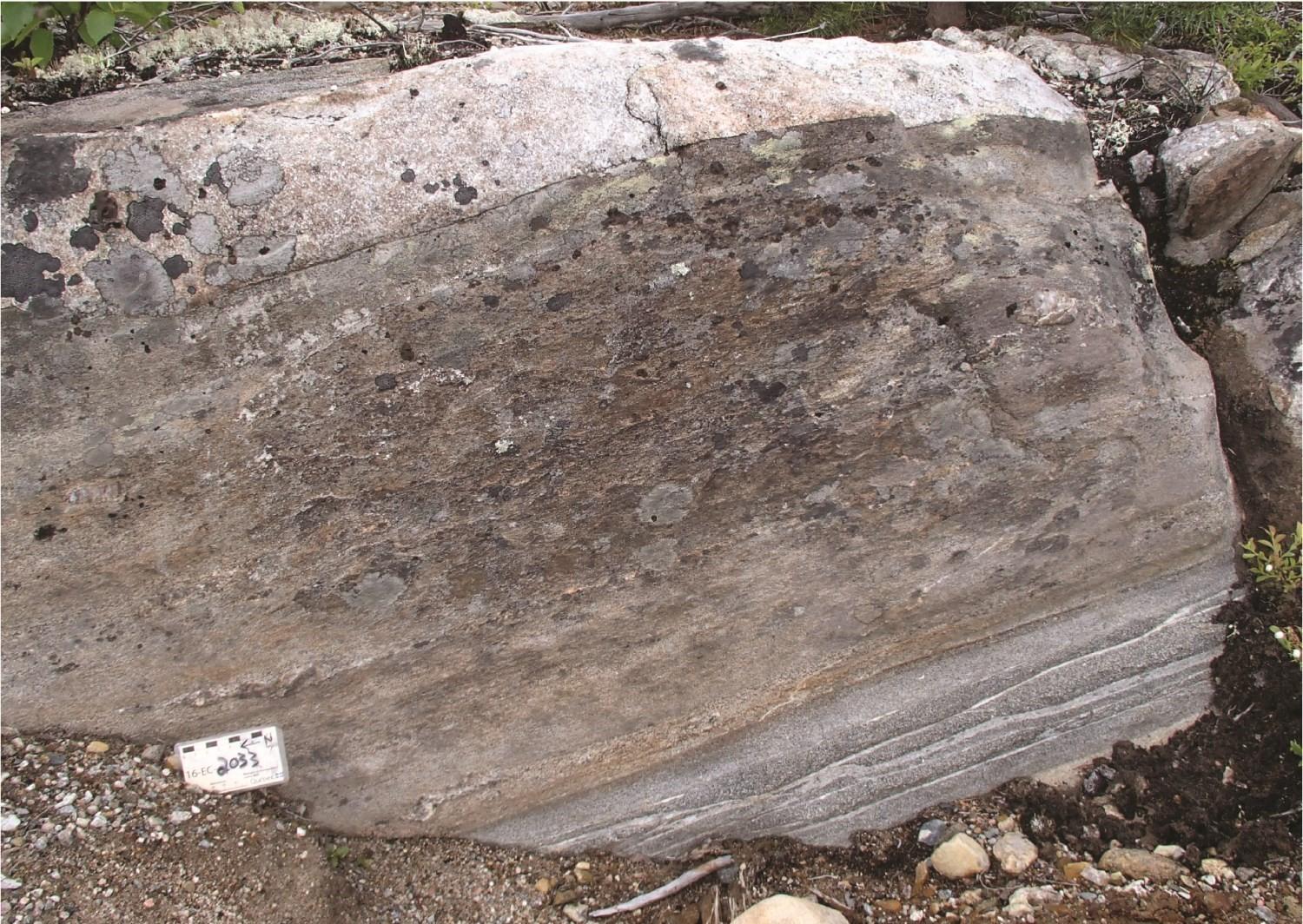
Last modified:
Translation of original French
| Author: | Brisson et al., 1998 |
| Age: | Precambrian / Archean / Neoarchea |
| Reference section: | |
| Type area: | The type area is the southeastern shore of Rocher Lake, where most facies are exposed (southwest of NTS sheet 32K09). |
| Geological province: | Superior Province |
| Geological subdivision: | Opatica Subprovince |
| Lithology: | Paragneiss, amphibolites, metamorphosed intrusive rocks |
| Unit type: | Lithodemic |
| Rank: | Complex |
| Status: | Formal |
| Use: | Active |
- None
Background
The Rocher Complex was defined by Brisson et al. (1998) to designate a band of metamorphosed and commonly migmatitized rocks located on the edge of the Nipukatasi Massif. Rocks of this unit correspond almost exactly to metamorphic zones 4 and 5 of Franconi (1974).
Description
The Rocher Complex represents a band of metamorphosed and commonly migmatitized rocks such as paragneisses, amphibolites, iron formations, biotite gneisses and pre-tectonic dioritic intrusions (Franconi 1974; Brisson et al., 1988).
Rocher Complex 1 (nAroc1): Paragneiss
The nAroc1 unit paragneiss has a quartzofeldspathic composition and contains 10 to 20% of mafic minerals (biotite and sometimes amphibole) more or less concentrated in bands a few centimeters to a few decimetres thick (Brisson et al., 1998). These rocks are migmatitized in the northern part of Rocher Lake. Primary structures are therefore most often obliterated, except in a few places where wackes and mudrocks have been identified. SE of Rocher Lake (SW of NTS sheet 32K09), paragneisses show a banding characterized by the alternation of leucocratic quartzofeldspathic bands and biotite-rich melanocratic bands that locally contain centimetric porphyroblasts of garnet and andalusite. Melanocratic layers are commonly rusty because of sulphide content (pyrite) and are in some places altered to epidote and hematite.
Rocher Complex 2 (nAroc2): Amphibolite and Intermediate to Felsic Lapilli Tuffs

 Amphibolites occur essentially in the SW part of the complex and generally form important lenses within the paragneiss unit (Franconi 1974; Brisson et al., 1998a). Amphibolites are also outcropping on the edge of a dioritic intrusion belonging to the Salamander Intrusive Suite (nAsam2) SE of Rocher Lake (SW of NTS sheet 32K09 and NW part of NTS sheet 32K08). Primary structures, such as pillows, are locally preserved, which confirms the extrusive nature of the unit as already presumed by Franconi (1974). The core of preserved pillows locally contains garnet porphyroblasts strongly retromorphized to albite and chlorite. Geochemical analyses confirm a tholeiitic affinity (Brisson et al., 1998; Leclerc and Caron-Côté, 2017). Medium to coarse lapilli tuffs with intermediate composition have been observed locally. Fragments size varies from a few millimeters up to 5 cm; mafic lapilli are dark gray and felsic fragments are beige. The matrix of these tuffs is composed of feldspar, quartz, biotite and locally includes disseminated sulphides which give the rock a rusty patina.
Amphibolites occur essentially in the SW part of the complex and generally form important lenses within the paragneiss unit (Franconi 1974; Brisson et al., 1998a). Amphibolites are also outcropping on the edge of a dioritic intrusion belonging to the Salamander Intrusive Suite (nAsam2) SE of Rocher Lake (SW of NTS sheet 32K09 and NW part of NTS sheet 32K08). Primary structures, such as pillows, are locally preserved, which confirms the extrusive nature of the unit as already presumed by Franconi (1974). The core of preserved pillows locally contains garnet porphyroblasts strongly retromorphized to albite and chlorite. Geochemical analyses confirm a tholeiitic affinity (Brisson et al., 1998; Leclerc and Caron-Côté, 2017). Medium to coarse lapilli tuffs with intermediate composition have been observed locally. Fragments size varies from a few millimeters up to 5 cm; mafic lapilli are dark gray and felsic fragments are beige. The matrix of these tuffs is composed of feldspar, quartz, biotite and locally includes disseminated sulphides which give the rock a rusty patina.
Rocher Complex 3 (nAroc3): Undetermined Iron Formation and Oxide Facies Iron Formation
Iron formations described by Franconi (1974) include thin layers rich in magnetite, cummingtonite and quartz, locally with sulphides (undetermined iron formations), as well as layers with clinopyroxene, garnet, quartz and magnetite (oxide facies iron formations).
Rocher Complex 4 (nAroc4): Biotite Gneiss
Gneisses have a quartzofeldspathic composition and contain up to 10% biotite. They are migmatitized and appear at the eastern boundary of the Rocher Complex (Franconi, 1974).
Rocher Complex 5 (nAroc5): Foliated or Locally Massive Nodular Diorite
Nodular diorite intrusions are foliated and locally massive. According to Franconi (1974), they result from pre-tectonic means.
Thickness and distribution
The Rocher Complex is an NE-SW oriented band located at the edge of the Nipukatasi Massif. Its width reaches 5 km for an area of about 130 km2.
Dating
None.
Stratigraphic Relationship(s)
The Rocher Complex is essentially composed of paragneiss and is therefore considered, at least in part, to be equivalent to sedimentary rocks of the Broadback Group (Brisson et al., 1998).
Paleontology
Does not apply.
References
| Author(s) | Title | Year of Publication | Hyperlink (EXAMINE or Other) |
|---|---|---|---|
| BRISSON, H. – GOSSELIN, C. – FALLARA, F. – GAULIN, R. – DION, D.-J. | Géologie de la région du lac Rocher. Ministère des Ressources naturelles, Québec; RG98-05, 22 pages. | 1998 | RG 98-05 |
| FRANCONI, A. | Géologie de la moitié ouest de la bande volcano-sédimentaire de Frotet-Evans, territoire d’Abitibi, rapport intérimaire. Ministère des Richesses naturelles, Québec; DP-265, 141 pages. | 1974 | DP 265 |
| LECLERC, F. – CARON-CÔTÉ, E. | Géologie de la région du lac Amisquioumisca. Ministère de l’Énergie et des Ressources naturelles, Québec. | 2017 | Bulletin géologiQUE |


